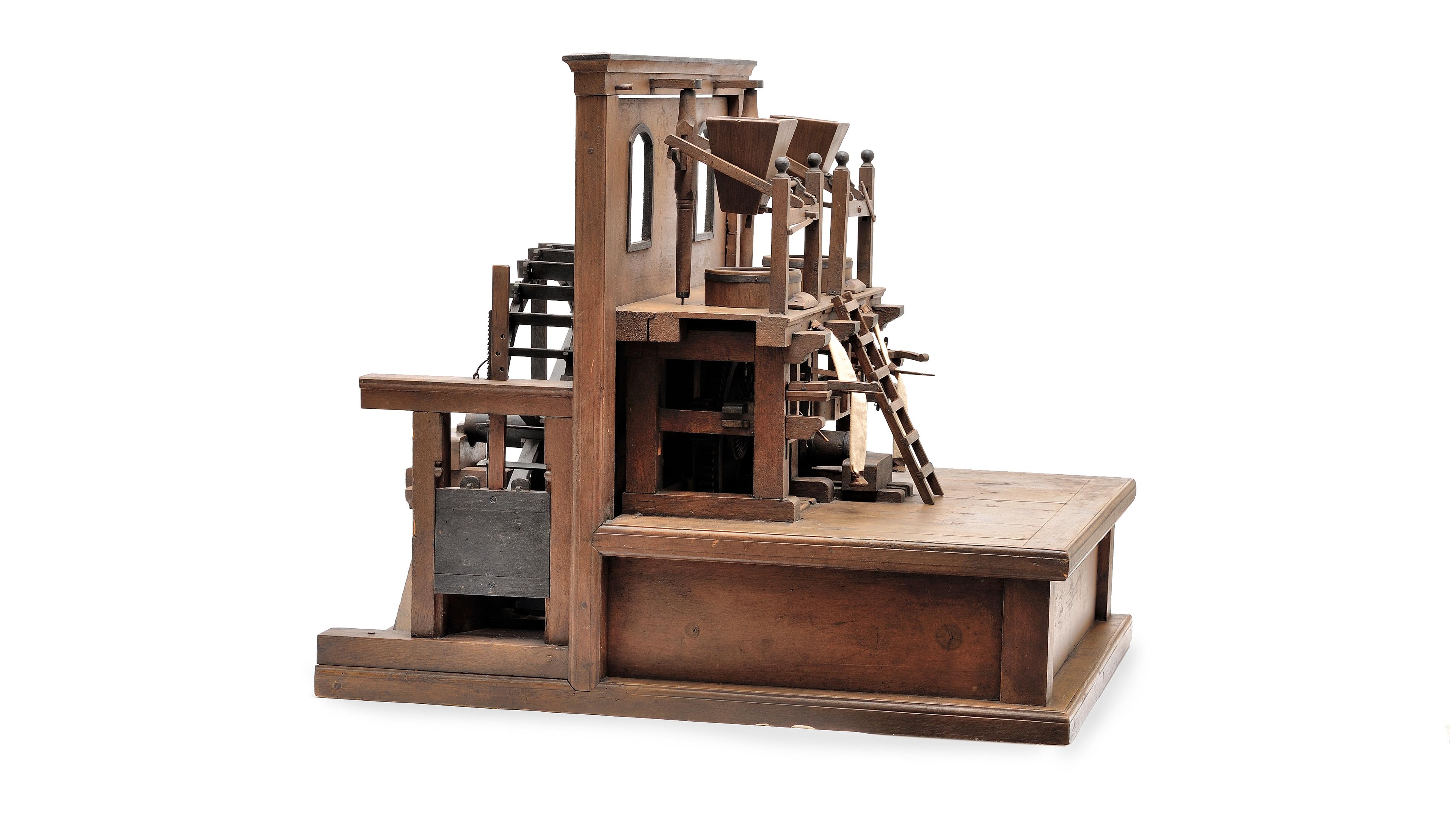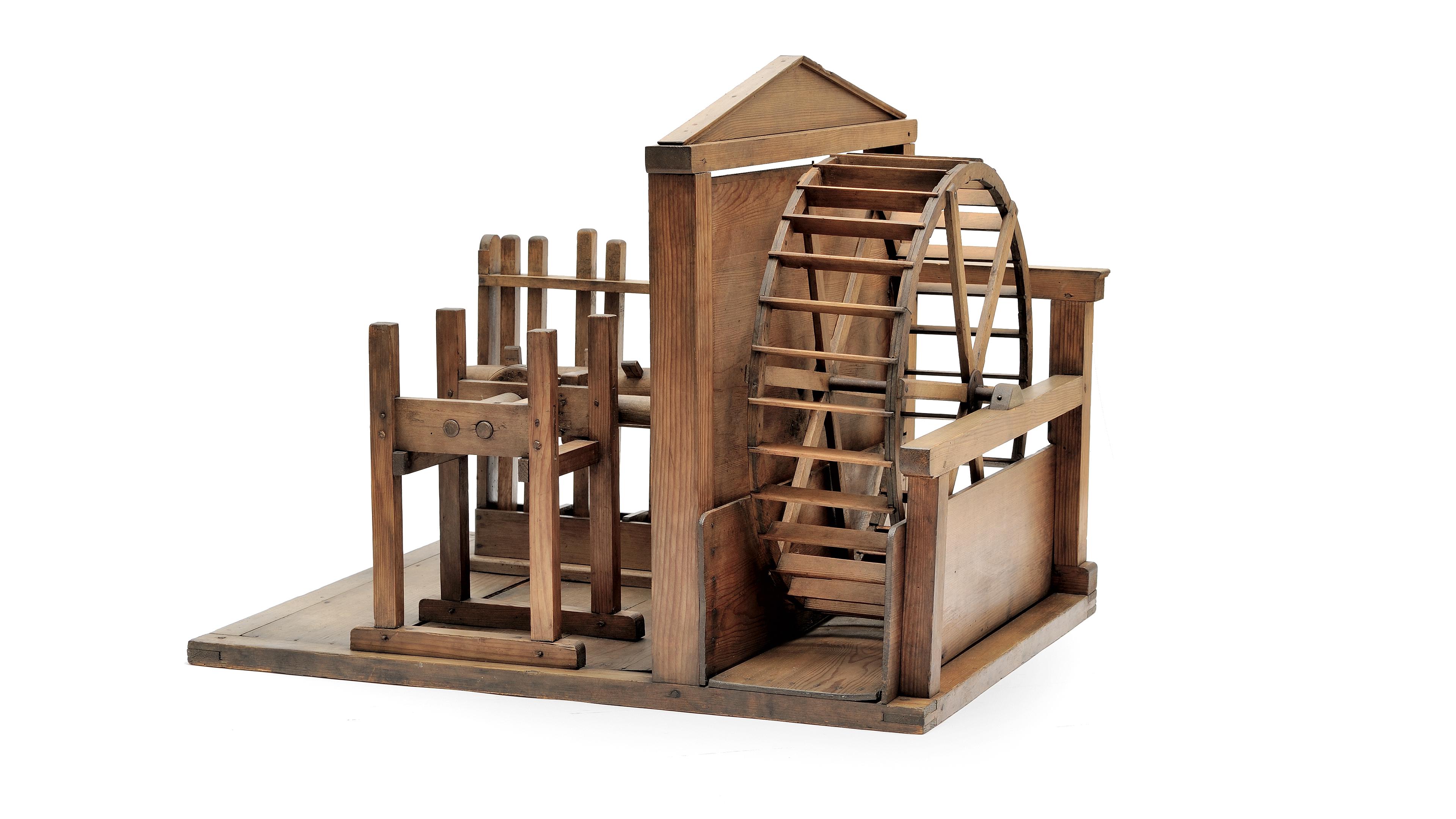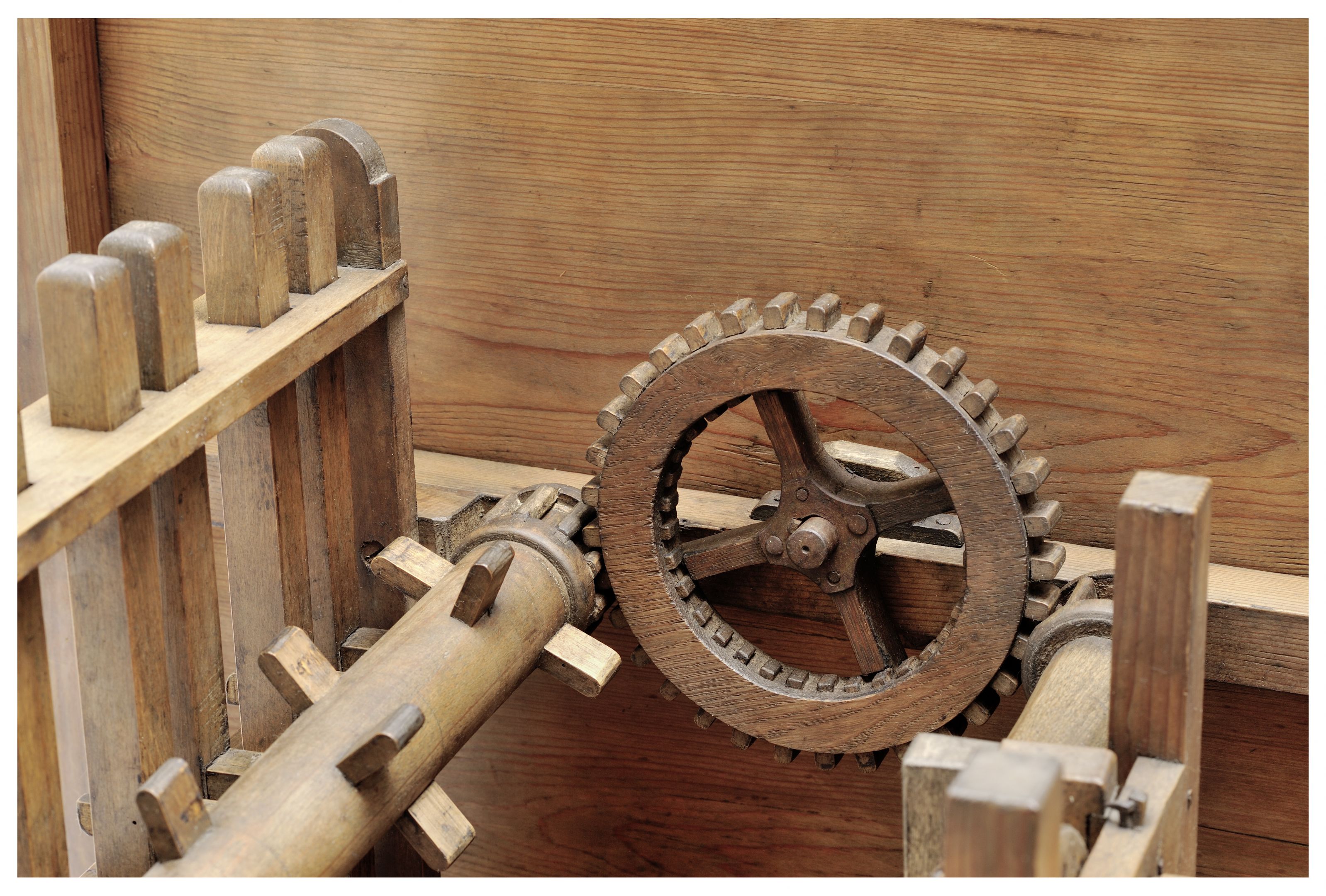Model of a Water Mill
Model of a Stamp Mill
German, late 18th century
Wood, iron, linen
H 60- 68 cm, W 80 cm, D 64 cm
Please contact us for further information!
Despite their impressive spatial effects and massive appearance, the two model mills presented here are anything but static: the mechanical activation of the respective milling wheel loudly sets the cogwheels, grinding gears, milling and tamping in motion. The transmission of power to the millstone via cogwheels can be clearly seen as well as the functioning of the machinery.
The very detailed and finely worked water mill is designed for grinding grain to flour – it even includes a removable textile flour bag. Dumps and sluices can be opened and closed, metal levers can be turned, metal pins can be loosened. The tamping mill, however, has a somewhat scaled-down design, combining two types of usage: while tamping takes place on the left, two rollers rub against each other on the right. Such tamping was used for a range of purposes, for example in oil production, but also in textile manufacturing. For example, one could process the wool cloth under the tampers and at the same time let the rollers wring out and smooth the wet cloth.
The structure and didactic concept of the mills, designed to provide a complete view, proves that they served as teaching aids. They were used to teach simple physical connections and the foundations of mechanical engineering, for example how gears work, as well as the complex interplay of all components required to operate a mechanical mill economically and profitably. As the famous and well documented model collection at Göttingen shows, such models were used in the eighteenth century, among other things, for the instruction of functionaries in the higher civil service, who were to receive as comprehensive an education as possible. Smallish historical repairs and traces of use prove that the models’ function was valued and that they were used over a considerable period of time. It can be concluded from the design and manufacture of the model mills that they were created in the last third of the eighteenth century in a German-speaking area. Both models are made of the same coniferous wood, the almost identical size of the bases and their origins confirm their relationship. Several comparable models have been preserved at the Göttingen model collection; in particular the model of a processing plant for ores with a crushing mill, grinding mill and sieves dated to around 1770/80 shows a similar structure and the same detailed design as the water mill. Comparable models can also be found in other natural science collections such as the Kunst- und Naturalienkammer der Frankeschen Stiftungen zu Halle or at the Historische Museum in Hanover. The unique collection of the chamber of models at the Maximilianmuseum Augsburg comprises an early water mill datable to the seventeenth century as well as several mechanical and hydraulic models from the eighteenth century, which resemble the mills presented here in terms of their conception and construction.
The two mill models are of museum quality and were certainly also part of a display of models or teaching collection. The fact that they are still in good condition, is a rare and fortunate circumstance – during the late nineteenth century most of the teaching and model collections were dissolved and many models destroyed. The models are not only convincing because of their didactic qualities and their extraordinarily good and functional condition: form, size and construction give them an aesthetic individuality and harmonious presence in the space quite beyond their mere functionality.
Published in: Raum für Objekte - Ariane Laue Kunsthandel, Kat. V - Nr. 6 & 8, München 2017





